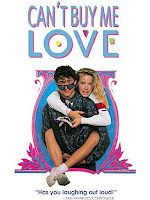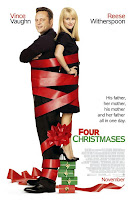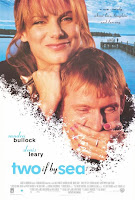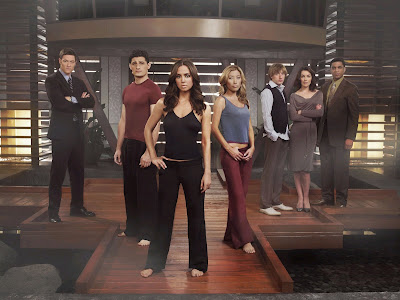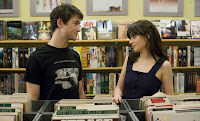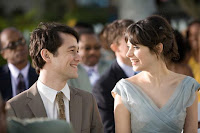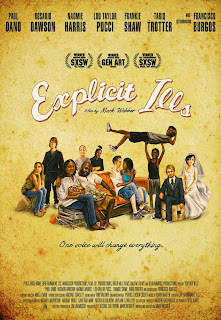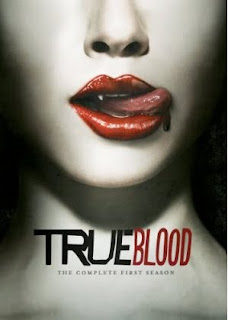 *That’s right, I said Season One. I haven’t seen a minute of Season Two, and won’t until it comes out on DVD. If Season Two contradicts everything I’ve said here, please bite your tongue–or leave your links in the comments section!
*That’s right, I said Season One. I haven’t seen a minute of Season Two, and won’t until it comes out on DVD. If Season Two contradicts everything I’ve said here, please bite your tongue–or leave your links in the comments section!
Here’s a secret: I love TV. Even more than I love movies. A television series can develop characters and story lines that are impossibly complex for a two-hour movie, and can really dig into themes and issues in ways movies can only touch upon. The high-quality television series is our generation’s answer to the 19th century serial novel–an excellent vehicle for cultural analysis and a popular genre (although most quality television is currently the domain of premium cable, which is, I admit, a problem).
A rare thing happened at work a few weeks ago: three of us (it’s a small business, and none of us has cable) started watching True Blood on DVD at the same time, allowing us to discuss a cultural object a little bit more complicated–and rewarding–than standard reality show fare.
To begin, in the words of my employer, since the show is on HBO, it’s already light years beyond anything else on TV–so even if it’s flawed, it’s hard to argue against watching (and enjoying) it.
True Blood, for the final few people unaware of the current vampire craze in the U.S., is set in small-town Louisiana a couple of years after vampires officially “came out of the coffin.” Supernatural figures and those with more mundane talents–like mind-reading and curing alcoholism & anxiety with fake exorcisms–populate Bon Temps. While the latter refers to the voodoo line True Blood refuses to cross, the former is the powerful ability of the main character, Sookie Stackhouse. (The show is based on Charlaine Harris’ series of novels about the heroine, which I haven’t read. But might.)
Rather than write a complete review of the entire first season (twelve 50-minute episodes), which I’m not sure how to do in the first place, I’ll highlight a few of the female characters and why I choose this series–despite its flaws–as a Ripley’s Pick.
Sookie Stackhouse (Anna Paquin)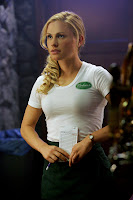 Sookie, the star of the show, is a waitress who can read minds–unless she concentrates on not listening. What draws her most to Vampire Bill is that she can’t hear his thoughts, even if she tries. Now, Sookie conforms to a lot of vampire story tropes: she is chaste (at first), in a kind of distress that warrants supernatural intervention (mostly), very pretty, and scantily clad. She is all of these things, yet she subverts so many expectations that I think the show plays with these tropes more than conforms to them. Sookie is a virgin when the show begins, but it doesn’t take long for her to run for Bill (literally) after–in a Like Water for Chocolate moment–eating a pie her grandmother made (with love). She enjoys sex, and isn’t shamed by the ‘fangbanger’ accusations hurled at her. She’s strong, independent, smart, and ultimately powerful; and even if she does wear tiny, tiny dresses, she still beheads a serial killer with a shovel.
Sookie, the star of the show, is a waitress who can read minds–unless she concentrates on not listening. What draws her most to Vampire Bill is that she can’t hear his thoughts, even if she tries. Now, Sookie conforms to a lot of vampire story tropes: she is chaste (at first), in a kind of distress that warrants supernatural intervention (mostly), very pretty, and scantily clad. She is all of these things, yet she subverts so many expectations that I think the show plays with these tropes more than conforms to them. Sookie is a virgin when the show begins, but it doesn’t take long for her to run for Bill (literally) after–in a Like Water for Chocolate moment–eating a pie her grandmother made (with love). She enjoys sex, and isn’t shamed by the ‘fangbanger’ accusations hurled at her. She’s strong, independent, smart, and ultimately powerful; and even if she does wear tiny, tiny dresses, she still beheads a serial killer with a shovel.
Tara Thornton (Rutina Wesley)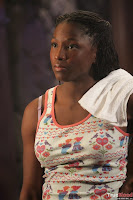 Sookie’s best friend, and my favorite character. Unlike most female characters on TV, Tara is a real woman with real problems. Aside from her shape-shifter boss/love interest, Sam, and her origins-yet-defined adolescent crush, Jason, Tara deals with isolation, loneliness, and an alcoholic Jesus-freak mother. She is independent and abrasive, and despite her best efforts, falls to the defense mechanisms of her mother (her go-to accusations of racism and sexism, drinking, demon exorcism for melancholy). She’s also wicked smart–the show opens with her reading Naomi Klein’s Shock Doctrine, and reminds us again and again that she reads for knowledge. She doesn’t always know what to do with her knowledge, however, as evidenced in her lashing out at the customer who interrupts her reading of Klein. Tara is legitimately angry, but hasn’t figured out how to direct her anger at anything but herself.
Sookie’s best friend, and my favorite character. Unlike most female characters on TV, Tara is a real woman with real problems. Aside from her shape-shifter boss/love interest, Sam, and her origins-yet-defined adolescent crush, Jason, Tara deals with isolation, loneliness, and an alcoholic Jesus-freak mother. She is independent and abrasive, and despite her best efforts, falls to the defense mechanisms of her mother (her go-to accusations of racism and sexism, drinking, demon exorcism for melancholy). She’s also wicked smart–the show opens with her reading Naomi Klein’s Shock Doctrine, and reminds us again and again that she reads for knowledge. She doesn’t always know what to do with her knowledge, however, as evidenced in her lashing out at the customer who interrupts her reading of Klein. Tara is legitimately angry, but hasn’t figured out how to direct her anger at anything but herself.
Amy Burley (Lizzy Caplan)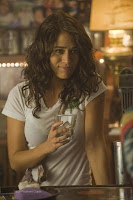 Amy Burley is a wolf in sheep’s clothing. On the surface she’s a beautiful, free-spirited wanderer who opens Jason’s eyes up to the wonders of the natural world–and vampire blood, an illegal substance with LSD qualities. While we’re charmed by her indie good looks and hippie-stuck-in-a-perpetual-summer-of-love ways, there’s something dark and evil underneath. She’s selfish and nasty, and will stop at nothing–including manipulating born-follower Jason, kidnapping, and murdering–to indulge her desire to escape into a drug-induced euphoria. Though her storyline isn’t a major one, it offers some straightforward cultural critique. Like some actual hippies in the ’60s, interested only in indulging selfish desires while Vietnam raged and the Civil Rights casualties mounted, Amy ignores reality in service of continuing her fantasy. (Those who critique the show as ultimately regressive might use her character as an example; selfish hippies are a conservative bugaboo. Or, she might just be an example of the destructive nature of human desire.)
Amy Burley is a wolf in sheep’s clothing. On the surface she’s a beautiful, free-spirited wanderer who opens Jason’s eyes up to the wonders of the natural world–and vampire blood, an illegal substance with LSD qualities. While we’re charmed by her indie good looks and hippie-stuck-in-a-perpetual-summer-of-love ways, there’s something dark and evil underneath. She’s selfish and nasty, and will stop at nothing–including manipulating born-follower Jason, kidnapping, and murdering–to indulge her desire to escape into a drug-induced euphoria. Though her storyline isn’t a major one, it offers some straightforward cultural critique. Like some actual hippies in the ’60s, interested only in indulging selfish desires while Vietnam raged and the Civil Rights casualties mounted, Amy ignores reality in service of continuing her fantasy. (Those who critique the show as ultimately regressive might use her character as an example; selfish hippies are a conservative bugaboo. Or, she might just be an example of the destructive nature of human desire.)
This barely scratches the surface of True Blood, and I do think there are some legitimate critiques of the show–despite couching many of its themes in camp. My least favorite moments in the show involve its romantic plots, which are, frankly, boring and soap opera-esque, and pale in comparison to the show’s other interests.
True Blood–like creator Alan Ball’s previous series, Six Feet Under–definitely feels like a guilty pleasure, but both shows exhibit intelligence along with entertainment. I hope Season Two, which wraps this coming Sunday night, delves further into Southern identity, sexuality, and desire–rather than losing its smarts in a storm of supernatural battles.




